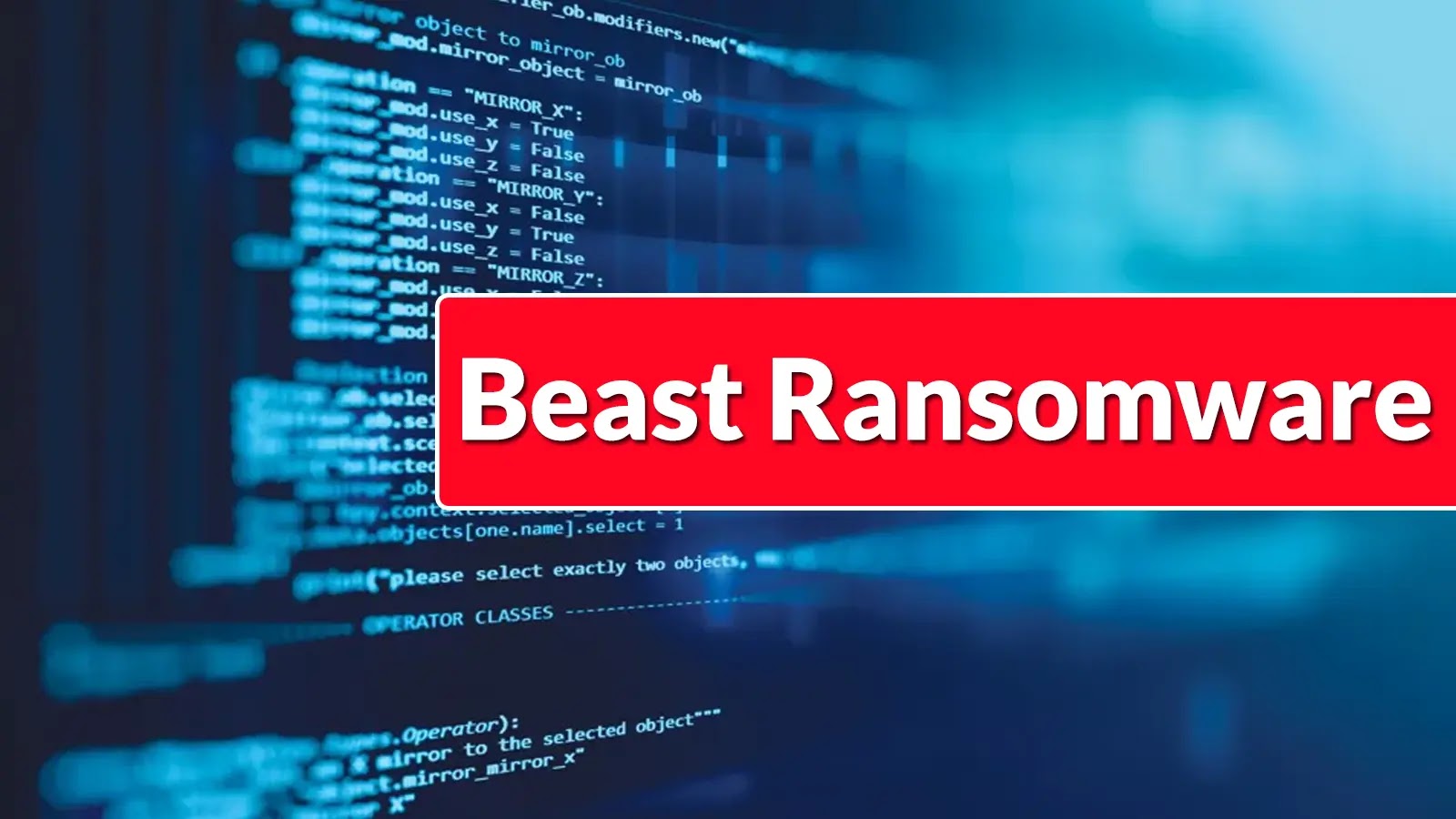
New Beast Ransomware Actively Scans for Active SMB Port from Breached System to Spread Across Network
The cybersecurity landscape just got a lot more dangerous with the emergence of the Beast ransomware, a sophisticated threat actively scanning for open Server Message Block (SMB) ports to rapidly spread across compromised networks. This aggressive tactic, evolving from the Monster ransomware strain, signals a new level of threat for organizations of all sizes. Understanding Beast’s modus operandi is crucial for bolstering your defenses against this formidable Ransomware-as-a-Service (RaaS) operation.
The Rise of Beast Ransomware: A New RaaS Contender
Beast ransomware isn’t just another variant; it’s a dedicated RaaS operation with a clear strategy. Officially launched in February 2025, this group quickly established its infrastructure by deploying a Tor-based data leak site in July. This rapid expansion solidifies their presence in the underground ransomware ecosystem, allowing affiliates to leverage Beast’s robust toolkit for their attacks.
What makes Beast particularly concerning is its evolution from the Monster ransomware. This suggests a continuous refinement of their attack methods, incorporating lessons learned and developing more effective strategies for network compromise and data exfiltration. The move from a basic ransomware strain to a full-fledged RaaS platform indicates a significant investment in their capabilities and a commitment to sustained malicious activity.
Active SMB Port Scanning: Beast’s Lateral Movement Strategy
One of the most defining characteristics of the Beast ransomware is its active scanning for open SMB ports from already breached systems. This isn’t a random sweep; it’s a targeted internal reconnaissance and lateral movement technique. Once Beast gains a foothold within an organization’s network, it doesn’t stop there. It leverages the compromised system to actively identify other vulnerable machines. This internal scanning significantly accelerates the encryption process and increases the overall impact of an attack.
The SMB protocol, while essential for file sharing and network communication, has historically been a significant attack vector for ransomware. Variants like WannaCry and NotPetya famously exploited SMB vulnerabilities (e.g., CVE-2017-0144) to achieve widespread network compromise. Beast’s approach, while not necessarily exploiting a new vulnerability, capitalizes on misconfigurations or unpatched systems that leave SMB ports exposed, even internally.
The RaaS Model: Amplifying the Threat
Beast’s adoption of the RaaS model dramatically expands its reach and potential for damage. This operational structure allows a broader range of malicious actors, even those with limited technical expertise, to execute sophisticated ransomware attacks. The RaaS provider handles the development, infrastructure, and negotiation tools, while affiliates focus on gaining initial access and deploying the ransomware.
This monetization strategy, coupled with their aggressive scanning techniques, means that organizations aren’t just fighting a single group; they’re fighting a distributed network of attackers all leveraging the same potent toolset. The existence of a data leak site further pressures victims by threatening to release stolen sensitive information if ransom demands are not met, adding an extortion layer to the attack.
Remediation Actions and Proactive Defenses
Combating the Beast ransomware requires a multi-layered approach focusing on prevention, detection, and rapid response. Given its reliance on SMB for lateral movement, securing this protocol is paramount.
- Patch Management: Regularly update all operating systems and software. While Beast may not exploit new zero-days, it will certainly abuse known, unpatched vulnerabilities. Pay particular attention to patches related to SMB (e.g., CVE-2017-0144, CVE-2020-0796).
- Disable SMBv1: SMBv1 is an outdated and insecure protocol with numerous vulnerabilities. Disable it on all systems where it’s not strictly necessary.
- Restrict SMB Access: Implement network segmentation to limit SMB access to only authorized devices and users. Use firewalls to block external SMB traffic, and internally, restrict access to critical servers.
- Strong Authentication and Least Privilege: Enforce strong, unique passwords and multi-factor authentication (MFA) for all accounts, especially those with administrative privileges. Apply the principle of least privilege, ensuring users and systems only have the access they absolutely need.
- Network Monitoring: Implement robust network monitoring solutions to detect unusual SMB traffic patterns, port scanning activity, or attempts at unauthorized access. Signature-based and behavioral analytics can help identify Beast ransomware activity post-initial compromise.
- Endpoint Detection and Response (EDR): Deploy EDR solutions across all endpoints. EDR can detect malicious activity, including process injection, file encryption, and attempts to modify system configurations, often before significant damage is done.
- Regular Backups: Implement a comprehensive backup strategy with immutable backups stored offline or in secure cloud environments. Test your backup recovery process regularly to ensure data can be restored promptly and effectively.
- Security Awareness Training: Educate employees about phishing, social engineering, and safe browsing practices. Initial access often comes through compromised credentials or malicious email attachments.
Tools for Detection and Mitigation
Leveraging the right tools can significantly enhance your defensive posture against ransomware like Beast.
| Tool Name | Purpose | Link |
|---|---|---|
| Microsoft Baseline Security Analyzer (MBSA) | Identifies security misconfigurations and missing updates, including SMB settings. | External Link |
| Nmap (Network Mapper) | Network discovery and security auditing, useful for identifying open SMB ports. | External Link |
| Wireshark | Network protocol analyzer for deep inspection of network traffic, including SMB. | External Link |
| Endpoint Detection and Response (EDR) Solutions | Detects and responds to advanced threats on endpoints. (e.g., CrowdStrike, SentinelOne, Microsoft Defender for Endpoint) | External Link |
| Vulnerability Scanners (e.g., Nessus, OpenVAS) | Identifies vulnerabilities and misconfigurations across your network, including SMB. | External Link |
Conclusion
The Beast ransomware, with its active SMB port scanning and RaaS model, represents a severe and evolving threat. Its ability to rapidly propagate across networks from an initial breach underscores the critical need for proactive cybersecurity measures. By prioritizing patch management, securing SMB, implementing robust network monitoring, and investing in EDR, organizations can significantly reduce their attack surface and mitigate the risk posed by this aggressive new ransomware strain. Staying ahead of these threats requires constant vigilance and a commitment to strong security hygiene.





